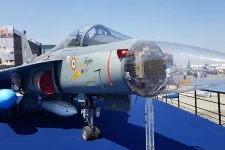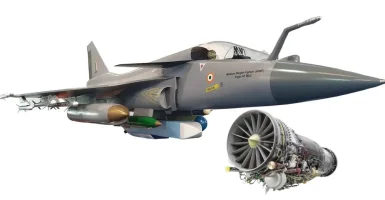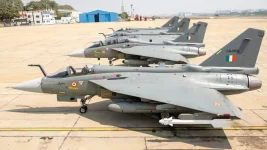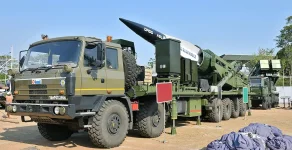- Views: 1K
- Replies: 10

Hindustan Aeronautics Limited (HAL) is poised to conduct live fire trials of the indigenous HELINA anti-tank guided missile (ATGM) from its Light Combat Helicopter (LCH), "Prachand," marking a significant advancement in India's defence capabilities.
The trials, anticipated to commence soon, will demonstrate the integration and operational readiness of the HELINA missile with the LCH platform.
The HELINA, a derivative of the NAG missile, is a third-generation, fire-and-forget ATGM developed by DRDO. Designed to neutralize armored threats with precision, the missile boasts a range of up to 7 kilometers.
Its advanced Imaging Infrared (IIR) seeker allows for autonomous target tracking post-launch, utilizing a Lock-on Before Launch (LOBL) system for enhanced accuracy. The HELINA is capable of engaging targets in both direct hit and top attack modes, providing versatility against various armor types.
This upcoming test follows a successful 2022 trial where HELINA, launched from an Advanced Light Helicopter (ALH), accurately engaged a simulated tank target. This prior success validated the missile's design and its integration with helicopter platforms.
These trials will be first of its kind, where HELINA will be launched from LCH. The missile is currently in limited production, with new batches slated for integration and testing on the LCH-Prachand, further enhancing the helicopter's combat prowess.
The LCH Prachand, developed by HAL, is a multi-role combat helicopter designed for high-altitude operations. It is renowned for its agility, maneuverability, and capacity to operate in challenging terrains.
Notably, the LCH is one of the few attack helicopters in the world capable of landing and taking off at an altitude of 5,000 m (16,400 ft) with a considerable load of weapons and fuel.
Integrating the HELINA ATGM significantly bolsters the LCH's anti-tank capabilities, adding a potent weapon to its arsenal, which already includes a 20mm turret gun, 70mm rockets, and air-to-air missiles.
The "fire and forget" capability of the HELINA missile allows the LCH to engage a target and immediately maneuver away or engage other threats, a critical advantage in dynamic battlefield scenarios. This capability minimizes the helicopter's exposure to enemy fire, enhancing its survivability and operational effectiveness.
The successful induction of the HELINA into the Indian armed forces will significantly enhance the country's defence preparedness and further solidify its position as a major player in the global defence landscape. The Indian Army and the Indian Air Force have placed orders for the LCH Prachand, anticipating its enhanced capabilities with the HELINA integration. It is expected that the LCH will play a pivotal role in future combat operations, offering a potent combination of firepower and versatility.




